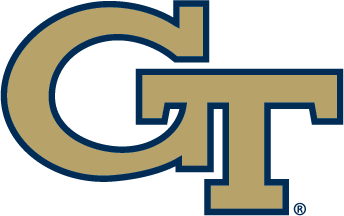March 7, 2003
by Barry Jacobs
Bobby Cremins is one of a kind, as a coach and a person. And because of who he is, as much as what he did, Georgia Tech commands a prominent place in college basketball.
“We rely so much in recruiting on the tradition, on the success he’s had in the past,” says Paul Hewitt, his successor as coach of the Yellow Jackets. “He built the Georgia Tech tradition.”
Cremins inherited a program that, while estimable under coach John “Whack” Hyder, made a single NCAA appearance prior to the young coach’s arrival for the 1981-82 season. Cremins came to a school that, in its first two years of competition in the Atlantic Coast Conference in 1980 and 1981, notched a cumulative 12-41 record, 1-29 in league competition. Some Tech fans attended games wearing paper bags over their heads. A section of 2,000 seats at Alexander Memorial Coliseum often sat empty, purchased by fans at other schools so they could qualify for ACC Tournament tickets.
By the time Cremins stepped aside following the 2000 season, Tech had made 10 NCAA appearances, including nine straight from 1985 through 1993, and enjoyed a fearsome homecourt advantage at the Thrillerdome. The 1990 squad reached the Final Four for the first and only time in school history. The Jackets tied for first place in the ACC in ’85 and finished alone atop the standings in 1996. They won a trio of ACC titles — in 1985, 1990 and 1993 — and posted 13 consecutive winning seasons and 15 in Cremins’ 19 years on the job.
The program produced the ACC player of the year in ’90 in Dennis Scott, eight rookies of the year in the 14 seasons from 1983 through 1996, 13 first team All-ACC selections, and a dozen first-round NBA draft choices.
In short, under Cremins’ guidance Georgia Tech went from doormat to perennial contender, a force to be reckoned with in a tradition-rich conference. Perhaps no one in the 50-year history of ACC basketball ranks as a greater program builder.
“Bobby was a very good coach,” Homer Rice, the retired Tech athletics director who hired Cremins, says. “He was a heck of a recruiter and one of the finest persons I ever worked with. He was always upbeat. He was a fighter.”
Yet Cremins fought without rancor. He could be as animated and competitive as any of his coaching colleagues, leaping and gesturing along the sidelines throughout a game, trademark grey hair flopping wildly, but could go years without earning a technical foul.
Cremins could be painfully honest, particularly about his own shortcomings or those of his team. Following one particularly decisive road defeat, Cremins actually apologized. “It’s a great league and I was embarrassed for the league,” he said. “I was embarrassed for Georgia Tech. I was embarrassed for all my friends.”
He could be stunningly mindless of appearance, as when he conducted a media teleconference from the comfort of a bathtub, the acoustics giving him away. He could be uncommonly casual, inviting movie stars and others into his locker room to chat immediately prior to a game.
Other coaches sagely revealed their technical expertise. Cremins, almost devoid of pretense, made little effort to impress listeners with his grasp of X’s and O’s. Sometimes he forgot the names of opposing players, or whether they were even in the game at key junctures.
Still, he was three times voted the ACC coach of the year (1983, 1985, 1996), a total exceeded only by two Hall of Fame coaches, North Carolina’s Dean Smith and Duke’s Mike Krzyzewski.
Cremins brought his infectious grin and easily mimicked Bronx accent to Atlanta a year after Krzyzewski arrived at Duke and Jim Valvano landed at N.C. State.
“Everybody thought I was crazy,” he says of his decision to leave a successful perch at Appalachian State in Boone, N.C, for a foundering program in a power league, “but I felt like the ACC was just a great conference. Tech was a great academic school, sometimes too hard. And then of course the city of Atlanta, Atlanta is a big-time city. I thought the job had a lot of things to offer.”
So he became one of what he calls “the young guns” who soon transformed the balance of power in the ACC.
“To me, Tech became my American dream,” Cremins says. “Coaching at Georgia Tech was me living the American dream. It was also a personal dream for me to coach in the league I played in. Coaching at Georgia Tech also fulfilled that.”
Cremins had played guard at South Carolina, finishing in 1970, a year before the Gamecocks left the ACC. “I owe everything to Frank McGuire,” Cremins says of his coach. “He gave me my start, he gave me my opportunity.”
South Carolina was heavily favored to win the 1970 ACC title and advance to the Final Four. McGuire, who coached an undefeated UNC team to the 1957 NCAA championship, called the ’70 USC squad his best ever. But the Gamecocks were stopped in the ACC Tournament final, defeated in overtime by N.C. State after the ball was stolen from Cremins. Only one team from each league was invited to the NCAAs back then; South Carolina went nowhere.
“Not winning an ACC championship my senior year almost ruined my life,” Cremins recalls. “Unfortunately, I still have nightmares about that. Not as bad as it used to be.”
So when he built Tech’s program to competitive status, going from cellar to title in four years, Cremins felt both satisfaction and relief. “That meant we had arrived,” he says of the 1985 ACC Tournament championship. “Everbody said we couldn’t beat North Carolina the third time (that season). It was right there in Atlanta. To me personally, one of the reasons I wanted to coach in the ACC was to win an ACC championship ring that I lost as a player…
“In ’85, when that game was over, that was the championship I lost. I’ll always remember thinking about that. It took a lot of pain away for me.”
Tech’s transformation began with the arrival of a pair of key recruits, Brooklyn big man John Salley and Oklahoma guard Mark Price, who in 1983, aided by a short, experimental 3-pointer, became the first and only freshman to pace the ACC in scoring. “There were not a lot of expectations,” Cremins remembers, “so anything we did was a positive. Obviously, getting Mark Price and John Salley, that’s what started it all. Those two guys put us on the map.”
The good times rolled with refreshing warmth, producing dais scenes at post-game press conferences where players draped arms around their coach’s shoulders and teased him with little compunction. “It’s more like an older brother-younger brother relationship,” Salley said in 1985. “He’s more than a coach.”
The parade of exceptional players continued unabated — Bruce Dalrymple, Duane Ferrell, Tom Hammonds, Brian Oliver, Dennis Scott — as Cremins conjured talented groups of prep stars and gave them the freedom to learn and grow on the court.
The arrival of New York playmaker Kenny Anderson, perhaps the nation’s top prospect, put the finishing touches on a 1989-90 squad that advanced to the Final Four.
“Kenny Anderson, we knew once he arrived on campus he was special,” Cremins says. “Dennis had some weight problems the first two years, and he lost some weight and he was a different player. And Oliver was the heart and soul. You could just tell that those three guys on the court were really something. It was almost like you didn’t have to coach.”
The trio, dubbed “Lethal Weapon 3,” accounted for 79 percent of Tech’s scoring and became the first trio of 20-point scorers on one ACC team. Big men Johnny McNeil and Malcolm Mackey and reserve guard Karl Brown got the bulk of the playing time in a supportive role.
The Jackets finished 28-7, most victories by a Tech squad. Scott led the ACC in scoring with a 27.7-point average, highest in 15 years. Anderson was the 1990 rookie of the year and the second freshman ever voted first-team All-ACC. Oliver was MVP of the ACC Tournament.
“They’re fun to watch play, unless you have to be on the other sideline,” said Virginia’s Terry Holland. Cremins and the Yellow Jackets visibly enjoyed the ride. “I just wish we could bottle it and save it,” Oliver said of the experience.
The Jackets led UNLV, the eventual champs, by seven at halftime, but fell, 90-81 in the national semifinals. “I remember after the game I said, ‘OK, we learned a lot,” Cremins says. “‘We’ll get back next year.'”
But Scott left a year early to enter the pro draft following the 1990 season. “That was a shocker,” Cremins says. “Those things weren’t happening too often during that time…It was something we weren’t real prepared for, and we did slip.”
Other talented players kept coming, even as Anderson left in ’91 following his sophomore season. A group keyed by forward James Forrest and point guard Travis Best surprised everyone by winning the 1993 ACC title. Mackey, ’93 rookie of the year Martice Moore, and Drew Barry were the other major components of the squad.
There were distractions, however. South Carolina was courting Cremins to return as its head coach. He vacillated for months. Tech got bounced in its NCAA opener by Southern University, coached by Ben Jobe, a former Cremins assistant. Shortly afterward Cremins announced he was going to his alma mater. Almost as quickly, he said he couldn’t bear to abandon folks at Georgia Tech and did an about-face.
“The South Carolina thing, that personally knocked me out for a good three to four months,” Cremins says. “That was the worst period of my life. That was my mid-life crisis.”
Tech’s run of nine straight NCAA bids ended in 1994. Another blow landed in 1995 when, despite a .500 record and fifth-place in a league that saw a four-way tie for first, the Jackets were snubbed by the NCAA Tournament selection committee.
Then, in a move that surprised Cremins, premier guard prospect Stephon Marbury committed to Georgia Tech. Once Marbury meshed in the backcourt with Drew Barry, they led a squad with sophomore forwards Matt Harpring and Mike Maddox and junior center Eddie Elisma to a first-place ACC finish and a berth in the 1996 ACC Tournament final. “We just got on a roll that was really, really fun,” Cremins says.
The ’96 Jackets returned to the NCAAs for what proved the last time under Cremins, as again an early departure for the NBA, this time by Marbury after a single season, proved debilitating.
Untimely injury, another early departure by Dion Glover, and recruiting stumbles took their toll. “I said to myself one time, if we ever don’t go to the Big Dance four straight years, then I need to take a hard look at what I’m doing,” Cremins says.
So, with a handful of games remaining in the 2000 season, he announced his retirement as Georgia Tech coach effective at year’s end. A one-point loss in the ACC Tournament play-in game, accompanied by a standing ovation from the appreciative crowd, concluded a tenure that produced a 354-237 record, more victories at an ACC post than anyone except Smith and Krzyzewski.
“I think in my 28 years as a head coach, I have never met a more honorable opponent or great guy than Bobby Cremins,” Krzyzewski, a fierce rival, says. “I love him and adore him. Look, I’m about to cry. He made me cry a lot.”
Cremins, intent on leaving Tech “the right way,” as he put it, moved to Hilton Head Island in South Carolina and kept his distance from Georgia Tech basketball. “When I left Tech, I wanted to cut all ties. I wanted Paul Hewitt to have his own program and get out of his way.”
Removed from the limelight, Cremins spent more time with wife Carolyn, continued his avid reading, became a golfing regular, considered a few coaching offers, and stayed close to the game by getting involved in television broadcasting. “I do miss the action sometimes,” he admits. This season he did color commentary on ACC and Southern Conference games for Fox Sports South, as well as a pair of studio shows, and a few broadcasts for Jefferson-Pilot.
“We have a life of leisure and luxury,” Cremins says from his home. “We have a great life. I live on the Intracoastal Waterway. It’s just a beautiful place. My wife and I are very happy here.”
Meanwhile, almost as soon as Hewitt was hired Georgia Tech athletics director Dave Braine broached the idea of honoring Cremins. “The fact of the matter is, it’s the right thing to do,” says Hewitt, who thoroughly endorses the idea of naming the court at Alexander after his predecessor. “I guess it’s a way for us to say thanks for all the things he did at Georgia Tech.”
Cremins may have kept his distance, but Hewitt finds the former coach is always available and supportive when needed. “I can’t tell you how much of a help he’s been,” Hewitt says. “That’s the type of person he is.”
That personal generosity, plus good staffs, a penchant for attracting outstanding players, and a gift of leadership helped Georgia Tech build the national profile it enjoys today.
Barry Jacobs has covered ACC basketball since 1976 and is the author of “Golden Glory: The First 50 Years of the ACC.”









